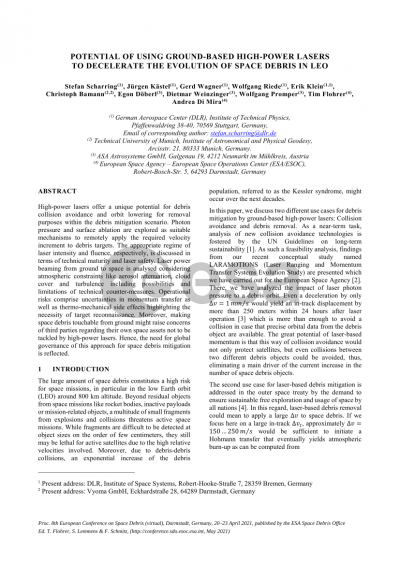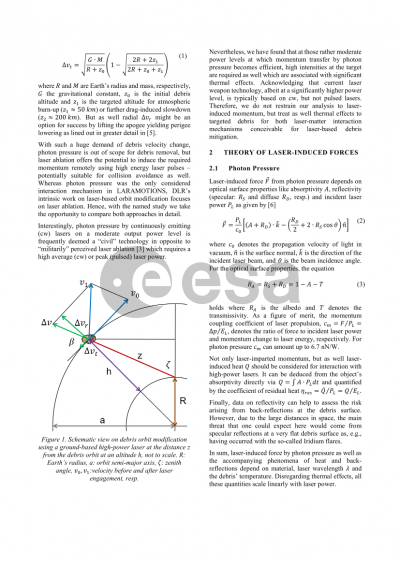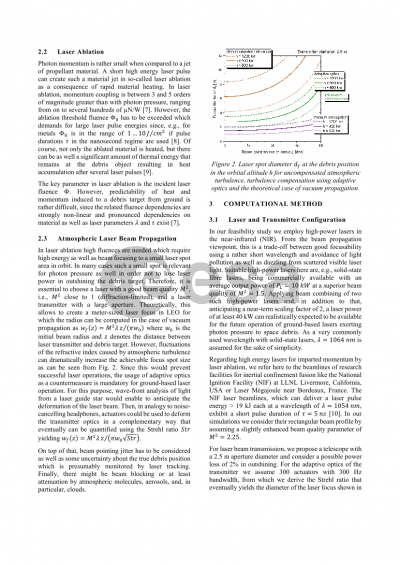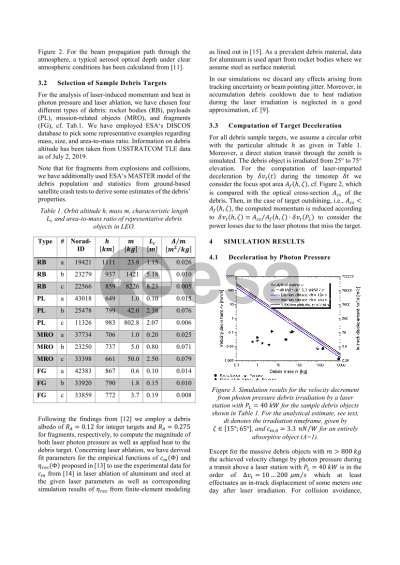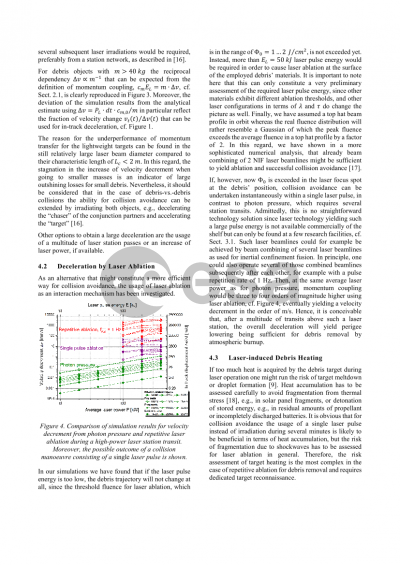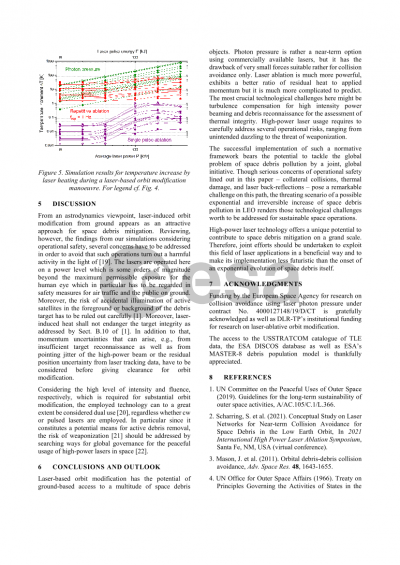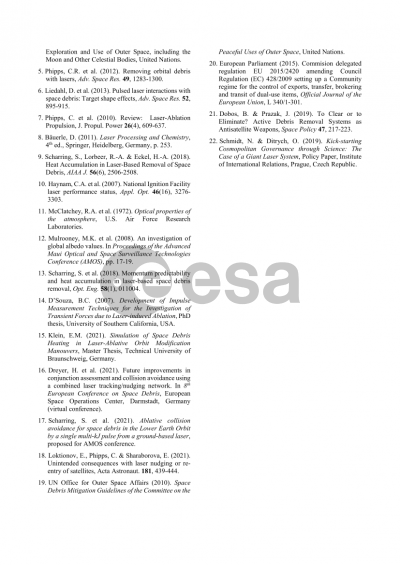Document details

Abstract
The large amount of space debris constitutes a high risk for space missions, in particular in the low Earth orbit (LEO) around 800 km altitude. Beyond residual objects from space missions like rocket bodies, inactive payloads or mission-related objects, a multitude of small fragments from explosions and collisions threatens active space missions. While fragments are difficult to be detected at object sizes on the order of few centimeters, they still may be lethal for active satellites due to the high relative velocities involved. Moreover, due to debris-debris collisions, an exponential increase of the debris population, referred to as the Kessler syndrome, might occur over the next decades.
High-power lasers offer the unique potential to change the orbital velocity of space debris objects remotely from ground – even for small objects being not accessible otherwise. In addition, high-power lasers can address both use-cases of collision avoidance and orbit lowering for removal purposes within the debris mitigation scenario. In this regard, photon pressure and surface ablation are explored as suitable laser-matter-interaction mechanisms to remotely apply the required velocity increment to debris targets. For both continuously emitting (cw) high-power lasers as well as for short pulse lasers exhibiting high laser pulse energies, the appropriate intensity (and fluence, resp.) regime is discussed in terms of technical maturity and laser safety. Laser power beaming from ground to space is analyzed considering atmospheric constraints like aerosol attenuation, cloud cover and turbulence including possibilities and limitations of technical counter-measures.
Operational risks of remote high-power laser interaction comprise uncertainties in momentum transfer and subsequent orbit modification as well as thermo-mechanical side effects highlighting the necessity of target reconnaissance. Moreover, making space debris touchable from ground is likely to raise concerns of third parties regarding their own space assets not to be tackled by high power lasers. In this regard, the need for global governance of this technology aiming to overcome the global space debris problem is reflected.
Preview
